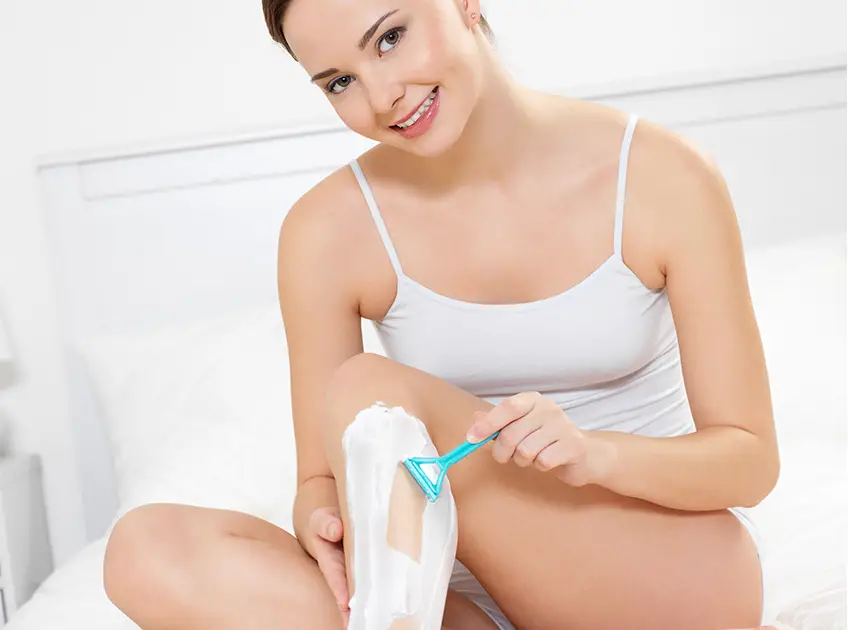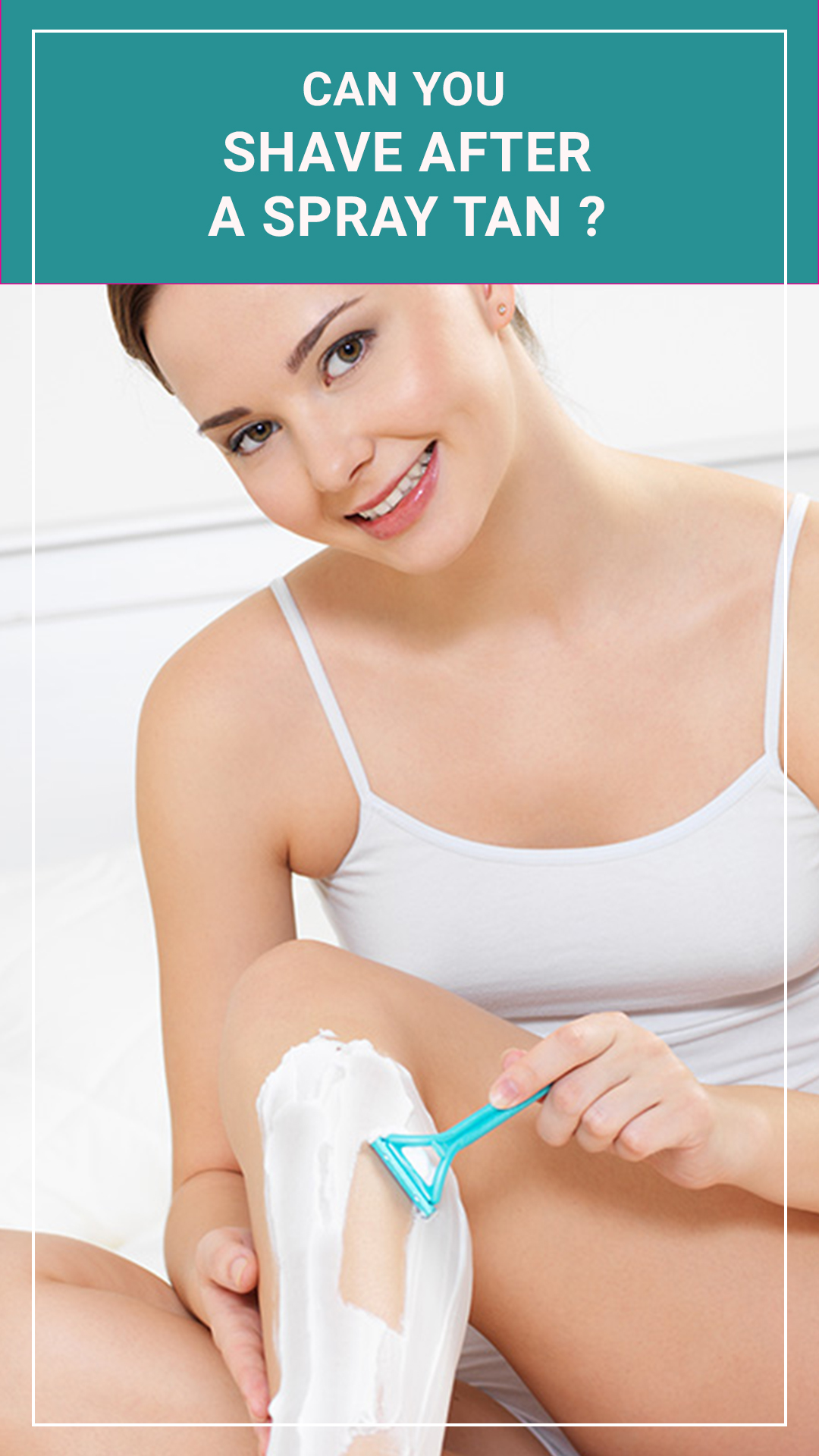
Important: This article is for informational purposes only. Please read our full disclaimer for more details.
Spray tan is a simple process that helps skin to develop a tan. Even though it is an easy, safe and simple process, you need to take good care of your skin after a spray tan. Proper care ensures you can get and maintain a darker tan for longer.
One question that often ponders the mind is can you shave after a spray tan?
Generally, shaving immediately after spray tan is not recommended as it will strip off the solution before it makes the skin cells dark, leaving behind a patchy tan. Therefore, it is recommended to wait at least 12 hours to shave after spray tan.
Keeping this time slot will allow DHA- dihydroxyacetone, the active ingredient of the spray tan, to function efficiently and bring the ideal skin tone.
Continue reading to know more about shaving after spray tan.
How Are Spray Tan And Shaving Related?
Spray tan, also known as sunless tan, is a process that involves the use of spray tan solution to darken the skin and develop a fake tan glow. The technicians use a nozzle gun to spray tan solution on the skin.
The spray tan solution consists of two major ingredients-
- DHA– It binds with the skin cells present in the uppermost layer of the skin and reacts with them to darken the skin tone.
- Bronzer– It helps to achieve the golden glow.
How dark the tan develops depends upon your skin type, how well you prepare your skin for a spray tan and what tone you opt for.
When you shave, the razor or blade scratches the uppermost layer of the skin to remove hair. Besides removing the hair, shaving also exfoliates and removes dead skin cells. If you shave immediately after a spray tan, you may also remove those skin cells that have darkened as a result of the tanning solution.
It will lead to stripping away the tan and fading it. Therefore, shaving immediately after spray tan is not a wise decision.
How To Shave After Spray Tanning?
Now that we know immediate shaving is not good for tanning, keeping a gap of at least 10-12 hours is ideal. However, if you have to go attend some party or occasion immediately and waiting for 10-12 hours is not possible, you need to be extra cautious and keep a few points in mind while shaving.
1. How Long To Wait
Even if you have to go somewhere urgently, it is advised to wait some time for shaving after the tanning session. DHA has come in contact with your skin, making it extra sensitive for some time.
Your skin may feel blushed right after the tanning session as DHA brings blood to the surface to ensure more UV absorption. Immediate shaving can cause more harm to the skin.
Even though the thumb rule is to wait for 12 hours, if you can’t wait this long, wait at least 4-6 hours. It will allow the skin to repair itself and reduce the chances of skin irritation after shaving.
2. Use A Tan Extender
Tan extenders are made to prolong the life of your tan, moisturize your skin, and protect it from harmful UV radiation. It is always a good idea to use a tan extender after every tanning session- be it a suntan, spray tan, or tanning bed.
It will nourish the skin and reverse all the damage done to it due to sun exposure or chemical exposure. Use a good quality tan extender to maintain tan and your skin’s health.
3. What Type Of Razor To Use
Always use a brand new razor from a good company for shaving, especially after a spray tan. Besides being hygienic, a new razor always gives quick and clean results.
Avoid using an already used razor as it will not give the smoothest and closest shaving result. At the same time, in an old razor, the blades could be worn off and end up pulling your skin. Using such razors may fade away more than a new razor.
4. Avoid Using Shaving Foam
Spray tan has already exposed your skin to chemicals. Adding up more chemicals present in shaving foam may harm the skin.
Shaving foam consists of alcohol, which doesn’t go well with the spray tan. Therefore, it is always advised not to use any product immediately after spray tan– be it a skincare product, deodorant, or perfume that contains alcohol. Also, alcohol may fade the fake tan and sometimes remove it completely.
If you still want to use shaving foam, choose the one that lacks alcohol and is made especially for fake tanning. It will ensure that your tan will be preserved. Gels or conditioners might also work as great substitutes for shaving foams.
5. Don’t Be Aggressive To The Skin
Since your skin has already undergone stress by coming in contact with chemicals through a spray tan, be kind towards it. Do not run the razor blade harshly over the skin. Instead, you may do it gently and very lightly.
Do not press the razor too hard on the skin as forcing may strip off the spray tan solution. Using gentle strokes will get the hair off while keeping the tan on.
6. Do Not Shave Regularly
If shaving is an everyday ritual to you, it’s time to ditch it. Once you have got a spray tan, regular shaving will only strip it off or fade it with every stroke. Doing it once is fine, but every day is not.
Final Words
Now that you know the answer to can you shave after a spray tan, you must have understood that shaving before a spray tan is far better than shaving after a spray tan. However, if you have to do it, follow all the aftercare instructions and precautions to get the best result.
You Might Also Like:
- 10 Best Exfoliator Before Spray Tan
- How To Exfoliate Before A Spray Tan?- Prevention & Safety Tips
- How To Use Self-Tanner And Moisturizer
- How And When To Shower After Spray Tan? 8 Aftercare Tips
- Shower After Tanning: What Is The Right Way To Shower After Tanning?
- How Long Does a Spray Tan Last? Do’s and Don’ts
- 7 Easy Ways to Remove Spray Tan (Fake Tan)
- How to Remove Tan with Honey
- How to Remove Tan from Skin Using Lemon Juice?
- 7 Best Home Remedies To Remove Tan
Image Credit: freepik
















